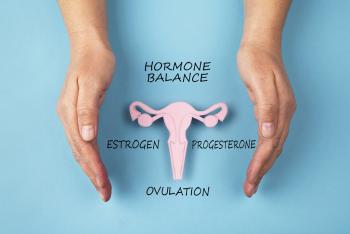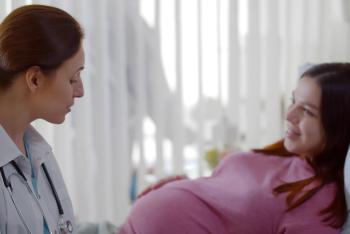Urinary tract infections (UTIs), bacterial infections of the bladder, are common health conditions...
Read More

Diagnosing interstitial cystitis/painful bladder syndrome (IC/PBS) can be complex. IC/PBS—which affects 3 to 8 million women in the United States—is a chronic condition that includes unpleasant sensations (discomfort, pain or pressure) that—patients perceive—originate from the bladder. An IC/PBS diagnosis can be made after a specialist determines symptoms have lasted for more than six weeks when there are no other identifiable causes, such as a urinary tract infection. Simply, this is a diagnosis of exclusion—some research shows it can take four to five years from the initial visit to correctly diagnose IC.
Waiting for a diagnosis can be stressful, and painful, for many patients. But providers can change the narrative around IC/PBS by having educational, evidence-based conversations with patients regularly.
“When it comes to diagnosing interstitial cystitis, the first step is to obtain a complete and thorough assessment,” said Woojin Chong, M.D., a urogynecologist at Inspira Medical Centers Vineland and Mullica Hill. “If the patient’s history, physical and pain evaluation confirm their condition, then helping patients find relief from interstitial cystitis requires a step-up approach: starting with the least invasive treatment to more invasive treatment options.”
Treatment for IC/PBS may include:
IC/PBS can appear in patients in their 20s, 30s and in the years directly following menopause. Younger patients may also experience co-conditions such as chronic pelvic pain, irritable bowel syndrome, fibromyalgia, endometriosis and dysmenorrhea. That is why educating patients, especially younger women, at the primary care level can be a life-altering intervention.
“Inspira physicians are doing a great job. We must continue reassuring women, especially young women, that what they are going through is not fake. Their pain is real. Their perception is real,” said Dr. Chong. “By helping patients understand their condition and delivering more information and resources, they will be able to better cope with what they have. Patients don’t always need surgery. What they might need is just some simple education and behavioral modification techniques.”
“Educating patients about their condition allows you to set proper expectations. IC/PBS isn’t like a broken bone—there is no one treatment to take away the pain completely,” said Dr. Chong. “Because the bladder is an extremely sensitive organ and anything we eat or drink can irritate it, taking a conservative approach first can often lead to more immediate relief.”
“If those changes do not alter the patient’s condition, move on to the next steps,” said Dr. Chong. “That includes seeking physical therapy, pain management and medical therapy.”
Another component in treating IC/PBS is medication, some of which is offered orally or through bladder instillation. “Currently, there is only one FDA-approved oral medication for IC/PBS, but it has a slim success rate of about 30-50 percent. Yet off-label drugs like amitriptyline, which blocks pain receptors; antihistamines to relieve pain and decrease the frequency of urination; and H2 receptors, which mitigate stomach secretions and pain, have shown greater success in patients,” said Dr. Chong.
Treating IC/PBS with medication can be arduous for patients. But having a team of gynecologists and urologists who are dedicated to this cause can be pivotal in your patients’ care plan.
“There is a dichotomy between oral medications and those absorbed via bladder instillation—currently at a better effectiveness rate and without causing systemic side effects,” said Dr. Chong. The common medications instilled in the bladder include heparin, lidocaine with bicarbonate with or without steroid or antibiotic solutions. “The pain management options exist on a spectrum, which is why the expectations we set for our patients are improved with open conversations.”

Urinary tract infections (UTIs), bacterial infections of the bladder, are common health conditions...
Read More
Prioritizing cervical health is a lifelong commitment—from HPV vaccinations in adolescence to...
Read More
Midwives offer a compassionate, patient-centered approach. With an emphasis on consent and shared...
Read More
The material set forth in this site in no way seeks to diagnose or treat illness or to serve as a substitute for professional medical care. Please speak with your health care provider if you have a health concern or if you are considering adopting any exercise program or dietary guidelines. For permission to reprint any portion of this website or to be removed from a notification list, please contact us at (856) 537-6772